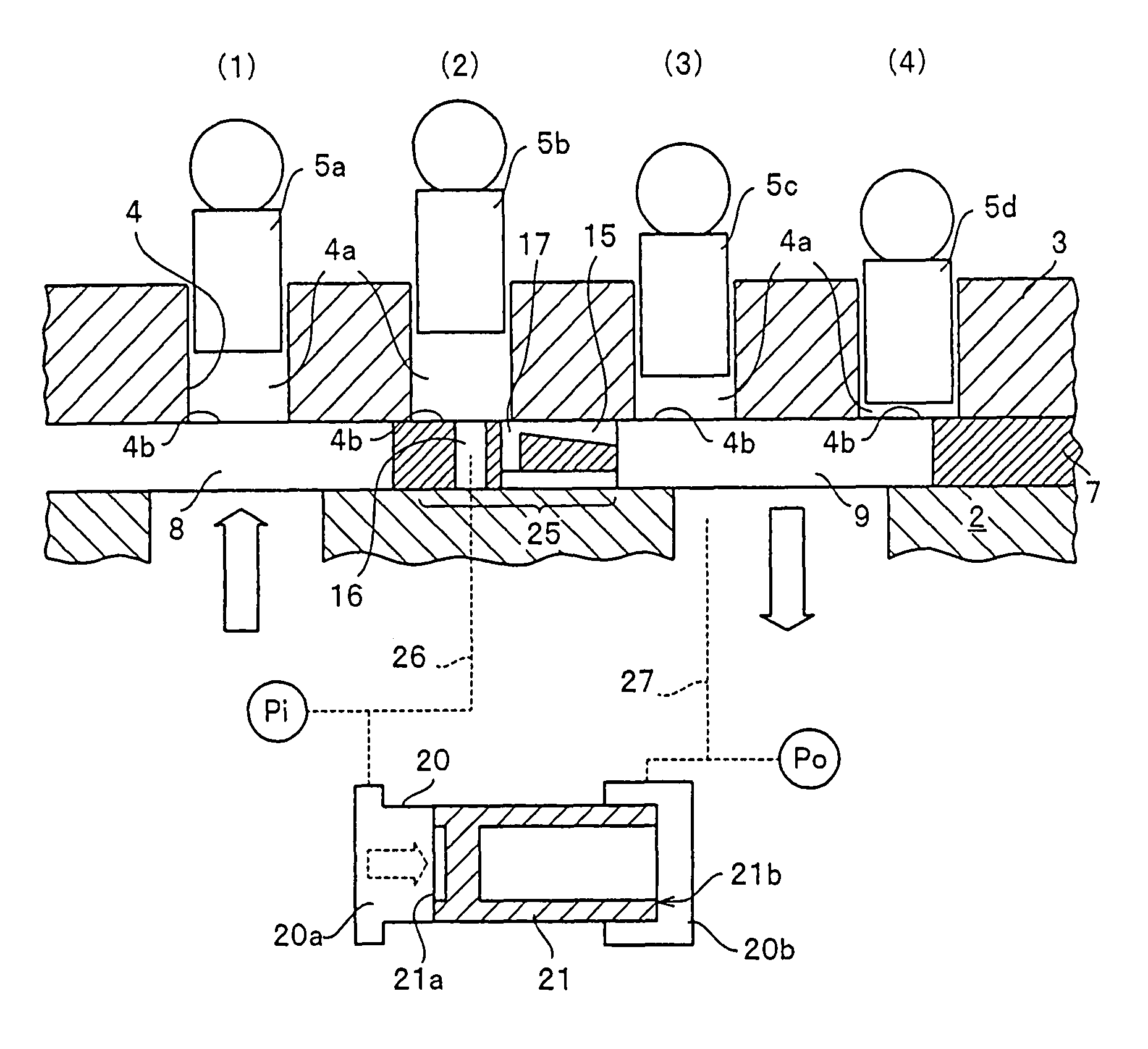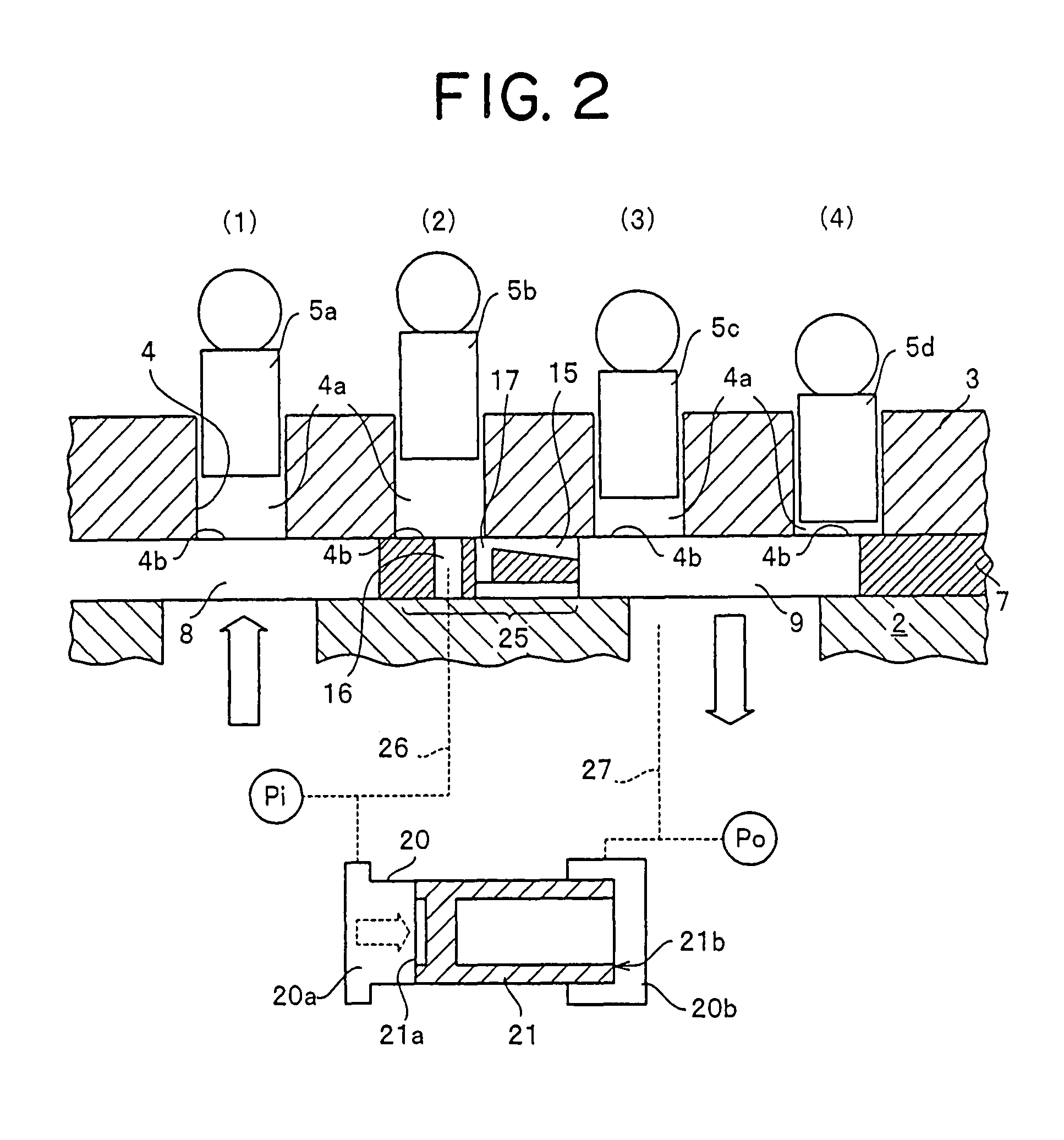Hydraulic piston pump with a balance valve
a technology of balance valve and hydraulic piston, applied in the direction of machines/engines, liquid fuel engines, positive displacement liquid engines, etc., can solve the problems of pulsating pressure, noise, vibration and noise, and/or bubbles, so as to prevent pulsating of pressure oil and reduce noise and vibration
- Summary
- Abstract
- Description
- Claims
- Application Information
AI Technical Summary
Benefits of technology
Problems solved by technology
Method used
Image
Examples
first embodiment
FIG. 1 is a view showing a constitution of a hydraulic piston pump in order to describe a constitution with a characteristic of the present invention. FIG. 1 shows one example of a cam plate type axial piston pump which has been conventionally used. A hydraulic piston pump 1 has a rotation shaft 6 rotatably supported on a casing 2 through a bearing and a cylinder block 3 rotatably supported on the casing 2. The cylinder block 3 rotates integrally with the rotation shaft 6 by means of a spline 13, a key groove, or the like.
A plurality of cylinder bores 4 are formed on a single circumference whose center corresponds to the rotation axis in the cylinder block 3, and a piston 5 is slidably fitted into each cylinder bore 4. An end surface of the cylinder block 3 is slidably in contact with a surface of a valve plate 7. A shoe 11 is rotatably attached to the distal end of the piston 5 which slides inside the cylinder bore 4, and the shoe 11 can slide on a cam plate 10 while its sliding di...
second embodiment
FIG. 7 shows a block diagram in which a spring is arranged in order to return the balance piston of the balance valve to an initial position and in which a timing hole is not formed on the valve plate 7. A second embodiment shows a modified example of the balance valve 20. In the second embodiment, the constitution in which a spring is arranged inside the balance valve 20 in order to return the balance piston to the initial position is provided, and it is different from the constitution of the balance valve 20 of the first embodiment.
The constitution of the second embodiment has a constitution similar to that of the first embodiment other than that in which the timing hole is not formed on the valve plate 7. The constitution in which a spring is arranged in order to return the balance piston 21 to the initial position will be mainly described below. With respect to constituent members other than the balance valve 20, the same reference numerals as those employed in the first embodim...
third embodiment
FIG. 10 is a block diagram showing an example in which the through hole 16 is formed on a portion on which it communicates with the cylinder port 4b when the piston 5 becomes immediately before the bottom dead center. FIG. 9 is also employed for supporting explanation, since a principal part view obtained by viewing the arrangement relationship on the plane surface of the valve plate 7 corresponds to views similar to FIG. 9 in the second embodiment.
A third embodiment has a constitution in which a spring is not arranged in the balance valve 20 as shown in FIG. 10, which is different from the balance valve 20 shown in FIG. 7 of the second embodiment. That is, in the second embodiment, as shown in FIGS. 7 and 8, as a constitution for returning the balance piston 21 to the initial position, provided is the constitution in which the spring 23 is arranged in the second pressure chamber 20b or the constitution in which the area difference in pressure receiving areas of the balance piston 2...
PUM
 Login to View More
Login to View More Abstract
Description
Claims
Application Information
 Login to View More
Login to View More - R&D
- Intellectual Property
- Life Sciences
- Materials
- Tech Scout
- Unparalleled Data Quality
- Higher Quality Content
- 60% Fewer Hallucinations
Browse by: Latest US Patents, China's latest patents, Technical Efficacy Thesaurus, Application Domain, Technology Topic, Popular Technical Reports.
© 2025 PatSnap. All rights reserved.Legal|Privacy policy|Modern Slavery Act Transparency Statement|Sitemap|About US| Contact US: help@patsnap.com



